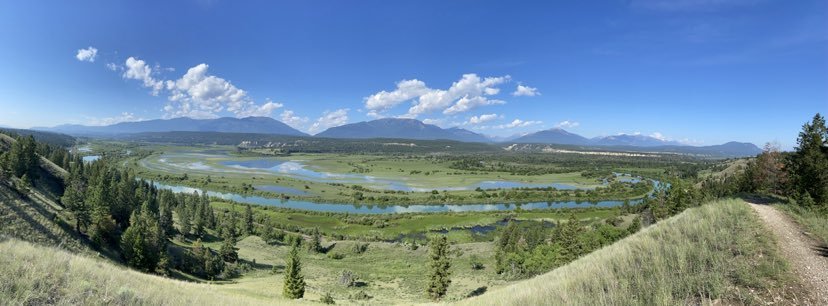
Discover the Columbia Valley
Trails play a crucial role in our communities, providing benefits that extend far beyond recreational enjoyment.
Greenways believes in not only the physical benefits of trail recreation but also the mental benefits of leading a healthy lifestyle.
Select Your Activity and Explore
Trail Etiquette
Like roads, trails connect us from where we are to where we want to be. But unlike roads, there aren’t often clear, universal rules to ensure safety and respect between trail users. Sometimes one user’s idea of enjoying a trail can be detrimental to others. By being aware that different users share the same trails, and adhering to some simple practices, we can enjoy an even better experience on the trail.
Treat other trail users with courtesy
Respect all signage and property
Avoid environmental damage
Inform yourself about allowed trail uses and trail closures
Leave wildlife and plants alone
Stay on the trail: Wade, Don’t Braid
The Three C’s
1. Common Sense
When encountering others on the trail, the most mobile usually yields the right of way but use common sense to determine who can move out the way most easily.
Ideally, cyclists yield to everyone and hikers yield to horses. However, a cyclist climbing a steep pitch will appreciate consideration.
Generally, it is a good habit to travel on the right side to allow ease of travel when encountering others and passing on the left.
2. Communication
Communicate with other trail users to warn them of dangers, trail conditions and features along the trail.
A friendly word of greeting reassures horses and lets others know of your presence.
Let people know if there are others in your group.
3. Courtesy
Be aware of and understanding of others’ needs.
Best Hiking Practices:
It is essential for everyone to be aware of the fragility of backcountry areas, and to treat them with care. “Take nothing out but photos; leave nothing but footprints” is the motto of all hikers.
Upon encountering horse riders, a group of hikers should all step off to the same side of the trail, the lower side if possible. A friendly exchange of greeting between hiker and horse rider will help calm the horses. Stay a good distance away from the horses.
Use existing trails as much as possible. But if you are not on an established trail, avoid marking trees or building rock piles to point out your path, and dismantle makeshift bridges required to cross streams. Avoid breaking branches. If you are in a group try not to be in the same track and keep the group small.
Above the treeline, walk on rocks and snow as much as possible. Alpine vegetation is delicate and takes a long time to grow back.
Best Mountain Biking Practices:
Be aware of other trail users. Always anticipate a horse or hiker around a blind curve and slow down. Announce your presence, especially coming from behind.
Yield to hikers and equestrians. Get off your bike and move to the lower side of the trail to let a horse pass because they are less easily spooked by an object lower than themselves. Keep your distance. Follow directions given by the horse rider.
Learn how to minimize damage to trails through proper riding techniques. Avoid skidding and sliding.
Stay on established trails and stay off trails during wet and muddy conditions as tire ruts will become pathways for water erosion.
British Columbia Trails Society:
http://www.trailsBC.ca/
